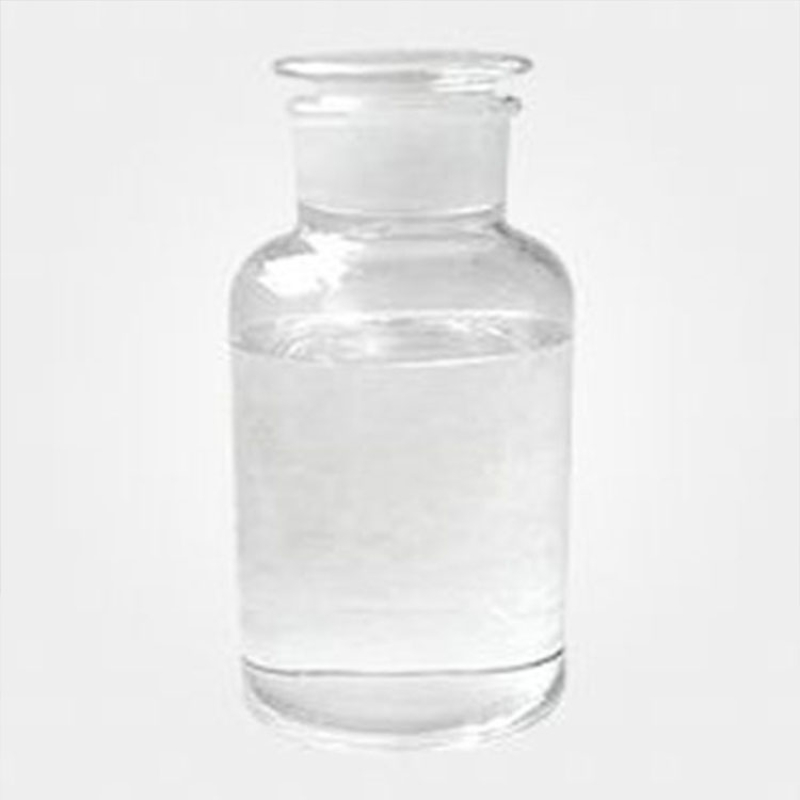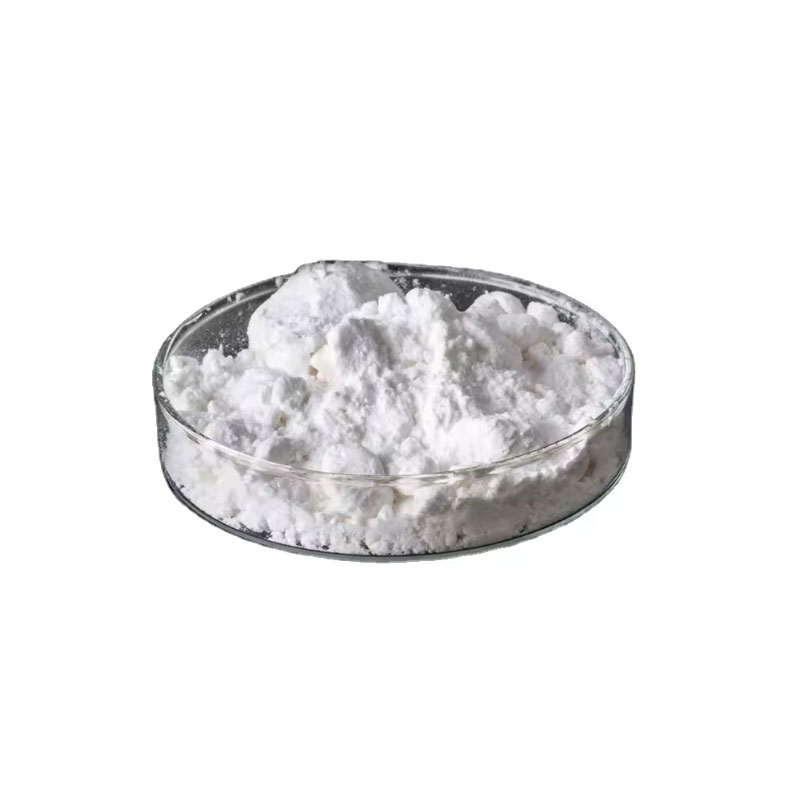Products Description of Chloramine B CAS#127-52-6Chloramine B hydrate is a white crystalline powder.Chloramine B Chemical PropertiesMelting point 190°CBoiling point 189℃[at 101 325 Pa]density 1.484[at 20℃]vapor pressure 0Pa at 20℃storage temp. Keep in dark place,Inert atmosphere,2-8°Csolubility H2O: 0.1 g/mL, clearform solidpka1.88[at 20 ℃]Water Solubility 0.1 g/mLMerck 14,2074BRN 3599287InChIKeyKDNCILYKSYKEFJ-UHFFFAOYSA-NLogP0.14 at 26℃EPA Substance Registry SystemChloramine B (127-52-6) Safety InformationHazard Codes CRisk
Contact Now
Products Description of Chloramine B 99% CAS#127-52-6Chloramine B, also known as sodium benzenesulfonyl chloride, is a white crystalline powder. It is explosive when exposed to impact, friction, fire or other ignition sources.
Contact Now
Products Description of TetrachloroethyleneCAS#127-18-4Tetrachloroethylene, also known as perchloroethylene, is a compound formed by replacing all hydrogen atoms in ethylene with chlorine in terms of molecular structure. It was first produced by Faraday in 1821 when he pyrolyzed hexachloroethane. It is a colorless, transparent liquid with an ether-like odor. It is non-flammable. Its relative molecular mass is 165.85. Its relative density is 1.6220. Its melting point is -22.7℃. Its boiling point is 121.2℃ and 33.2℃ (4.000×103Pa). Its refractive index is 1.5055.
Contact Now
Products Description of Nonylphenol CAS#25154-52-3Nonylphenol is the most toxic and difficult to biodegrade pollutant among environmental hormones, which has a serious impact on the biological endocrine system. Therefore, the research on nonylphenol detection methods and its toxicological effects has important practical significance for ecological protection and human health.Many advances have been made in the sample pretreatment and determination methods of trace NP and other environmental hormones.
Contact Now
Fumed Silica CAS#112945-52-5Synthetic Amorphous Silica has interesting thickening and thixotropic properties, and an enormous external surface area. It is produced by a vapor phase hydrolysis process using chlorosilanes or substituted silanes such as, silicon tetrachloride in a flame of hydrogen and oxygen. This material is formed and collected in a dry state.
Contact Now
Products Description of Zirconium Silicate CAS#10101-52-7Zirconium silicate is a high-quality, low-cost emulsifier that is widely used in various building ceramics, sanitary ceramics, daily-use ceramics, primary ceramics, etc. It has a wide range of applications and a large amount of applications. Zirconium silicate is also further used in the production of color picture tubes in the television industry, emulsified glass in the glass industry, and enamel glazes.
Contact Now
Products Description of Antimony triacetate CAS#6923-52-0Antimony(III) acetate is an antimony compound with the chemical formula Sb(CH3CO2)3.
Contact Now
Product Description:We are proud to present our top-grade Dimethylacetamide (DMAC), scientifically known as N,N-dimethylacetamide or N,N-dimethyl acetamide, with the CAS No. 127-19-5.
Contact Now
Tetrachloroethylene CAS#127-18-4 Tetrachloroethylene (chemical method Cl2C=CCl2) is a chlorinate hydrocarbon used as an industrial solvent and cooling liquid in electrical transformers. It is a colorless, volatile, nonflammable liquid with an ether-like odor. The most important section of tetrachloroethylene is produced by means of excessive temperature chlorinolysis of mild hydrocarbons.Tetrachloroethylene is an awesome solvent for natural materials.
Contact Now
CACL2 CAS#10043-52-4Product Description:At the heart of industrial and commercial applications is calcium chloride, a chemical compound with the molecular formula CaCl2 and registration number CAS#10043-52-4.
Contact Now
Products Description of Glycidol CAS#556-52-5Glycidyl alcohol is also called glycidol. This substance is used as a stabilizer for natural oils and vinyl polymers, demulsifiers, dyeing and layering agents, and is used in surface coatings, chemical synthesis, fungicides, etc.
Contact Now
Products Description of 1,1,3,3-Tetramethoxypropane CAS#102-52-3The ester compounds synthesized based on 1,1,3,3-tetramethoxypropane have ester-forming quaternary carbon atoms at the β position of the molecular structure of 1,1,3,3-tetramethoxypropane.
Contact Now
Calcium chloride(food grade)CAS#10043-52-4Product Overview:Introducing our high-quality Calcium Chloride (Food Grade) with the CAS#10043-52-4, a versatile compound that is essential in a variety of applications across the food, industrial, and manufacturing sectors.
Contact Now
Products Description of 2-Amino-4-methoxy-6-methylpyrimidine CAS#7749-47-52-Amino-4-methoxy-6-methylpyrimidine Boiling point 255.11°C (rough estimate) Melting point 157.0 to 161.0 deg-C Solubility in methanol: soluble 1%, clear to very slightly hazy, colorless to yellow White crystalline powder2-Amino-4-methoxy-6-methylpyrimidine Chemical PropertiesMelting point 156-158 °C (lit.)Boiling point 255.11°C (rough estimate)density 1.2081 (rough estimate)refractive index 1.6500 (estimate)solubility methanol: soluble1%, clear to very slightly hazy, colorless to yellowform
Contact Now
Products Description of Cobalt bis(2-ethylhexanoate)CAS#136-52-7Purple liquid.Cobalt bis(2-ethylhexanoate) Chemical Propertiesdensity 1.002 g/mL at 25 °Cvapor pressure 5Pa at 25℃Fp 104 °Fform liquidcolor purpleWater Solubility 40.3g/L at 20℃CAS DataBase Reference136-52-7(CAS DataBase Reference)EPA Substance Registry SystemHexanoic acid, 2-ethyl-, cobalt(2+) salt (136-52-7)Safety InformationHazard Codes Xn,NRisk Statements 10-36/37/38-40-43-66-65-62-50/53Safety Statements 26-36/37-62-61RIDADR UN 1268 3/PG 3WGK Germany&nb
Contact Now
Products Description of Calcium chloride CAS#10043-52-4Calcium chloride, CaC12, is colorless deliquescent solid that is soluble in water and ethanol. It is formed from the reaction of calcium carbonate and hydrochloric acid or calcium hydroxide and ammonium chloride. It is used in medicine, as an antifreeze, and as a coagulant.Calcium chloride (CaCl2) has many uses. It is used as a drying agent and to melt ice and snow on highways, to control dust, to thaw building materials (sand, gravel, concrete, and so on).
Contact Now
Products Description of 2-Chlorothiophene CAS#96-43-52-Chlorothiophene is used as an intermediate in organic synthesis and medicine. 2-Chlorothiophene CAS#96-43-5 Chemical PropertiesMelting point -71.9 °CBoiling point 127-129 °C (lit.)density 1.286 g/mL at 25 °C (lit.)refractive index n20/D 1.547(lit.)Fp 73 °Fstorage temp. 2-8°Csolubility soluble in Chloroformform LiquidSpecific Gravity1.286color Clear colorless to light brownWater Solubility INSOLUBLEBRN 104652Stability:VolatileInChIKeyGSFNQBFZFXUTBN-UHFFFAOYSA-NC
Contact Now
Products Description of Calcium chloride CAS#10048-52-4Anhydrous calcium chloride is a white porous frit or granule. It is easy to deliquesce. The melting point is 782℃, the density is 2.15g/cm3, the boiling point is higher than 1600℃, it is easily soluble in water and releases a lot of heat, and it is also soluble in ethanol and acetone. The most common is calcium chloride hexahydrate CaCl2·6H2O, colorless trigonal crystal, easy to deliquesce, bitter and salty taste, density 1.71g/cm3.
Contact Now
Products Description of Ethyl butylacetylaminopropionate CAS#52304-36-6Mosquito repellent, also known as ethyl butyl acetylaminopropionate, BAAPE, IR3535, and Imonin, is a plasticizer and a broad-spectrum, highly effective, low-toxic insect repellent.Ethyl butylacetylaminopropionate Chemical PropertiesMelting point <-20°Boiling point bp0.2 108-110°; bp0.5 126-127°density 0.987±0.06 g/cm3(Predicted)refractive index nD20 1.452-1.455Fp 318°F (159°C)storage temp. Sealed in dry,Room Temperaturesolubility Acetonitrile (Slightly), Chloroform (Slightly), Ethy
Contact Now
Calcium chloride CAS# 10043-52-4Product Description:At our company, we pride ourselves on offering high-quality Calcium Chloride with the chemical formula CaCl2. Our 99% Calcium Chloride is meticulously produced to meet the demands of various industries, ensuring optimal performance and efficiency.
Contact Now
Calcium Chloride (CAS#10043-52-4) - High-Quality Solution for Various IndustriesProduct OverviewCalcium Chloride (CaCl2), a high-purity industrial and food-grade compound, offers a versatile solution for applications across multiple industries.
Contact Now
Bulk Calcium Chloride CAS#10043-52-4Product Description:At our company, we pride ourselves on offering high-quality Calcium Chloride with the chemical formula CaCl2. Our 99% Calcium Chloride is meticulously produced to meet the demands of various industries, ensuring optimal performance and efficiency.
Contact Now
Products Description of 6-Methyluracil CAS#626-48-26-Methyluracil is a colorless crystal. The melting point is 311-312℃, and it has also been reported to be 270-280℃ (decomposition). It is soluble in water, hot ethanol and alkaline solution, and slightly soluble in ether.
Contact Now
Products Description of Terbinafine CAS#91161-71-6 Terbinafine hydrochloride can treat skin, hair and nail infections caused by Trichophyton, Microsporum canis and Epidermophyton floccosum. It can also treat various tinea, skin yeast infections caused by Candida, and onychomycosis caused by mold.
Contact Now


































